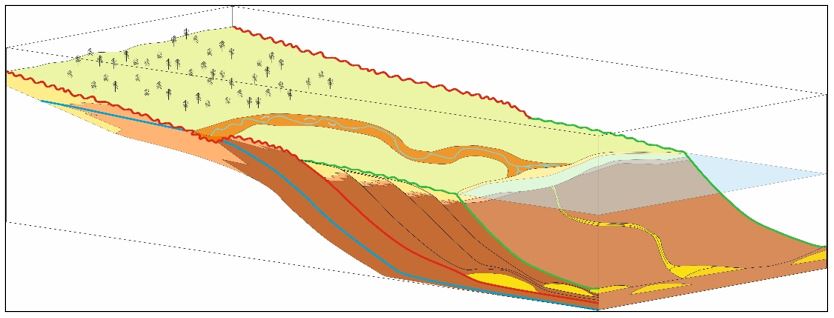Table of Contents
The Lowstand Systems Tract (LST)
Rivers bring sediments from the hinterland across the now exposed shelf with some rivers cutting deeply into the shelf and slope forming “incised valleys” which act as shelf by-pass channels depositing (relatively) coarser sediment near the base of the slope as a submarine fan (Lowstand Fan). As sea level fall ceases and then starts to rise slowly, submarine fan deposition ceases and is replaced by distal downlapping mudstones of the Lowstand Wedge which progressively cover the underlying systems tracts of the previous sequence. Shoreline sediments occur across the updip portion of this wedge. The incised valleys are back-filled by fluvial and estuarine sediments.

A sequence boundary marked in red by an unconformity on the shelf and a correlative conformity on the slope and basin floor. It is overlain at the base of the slope by Lowstand Fans (yellow) and across the slope by the Lowstand Wedge (brown, prograding sediments). Coastal sediments (pale yellow) updip of the wedge also prograde basinwards. The green surface is the MRS (see below).
As lowstand sediments build out into the basin they may be “contaminated” by fossils that were exhumed from shelf sediments (relatively shallow waters) and redeposited in deeper bathyal settings. Lowstand fan sands may be dominated by shallower-water fossils because of this.
Because sea levels are now relatively static and sedimentation is continuing, the prograding sediments essentially raise the level of the sea-floor reducing accommodation space. Organisms that inhabit the bathyal slope floor progressively show shallower and shallower characteristics as this happens so that, in a vertical section, there is a shallowing-upwards trend in the fossil assemblages.